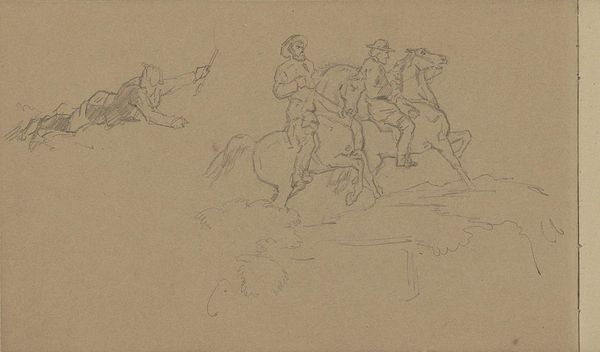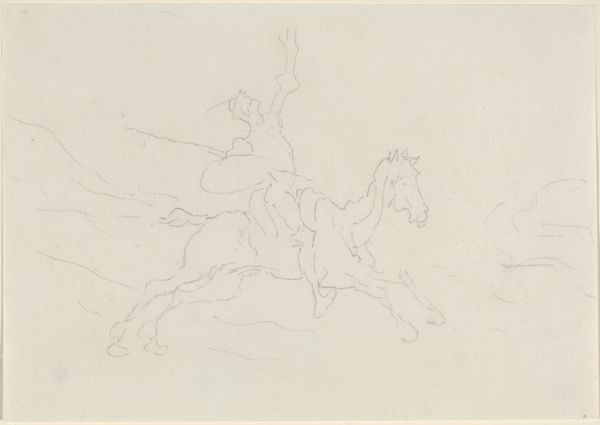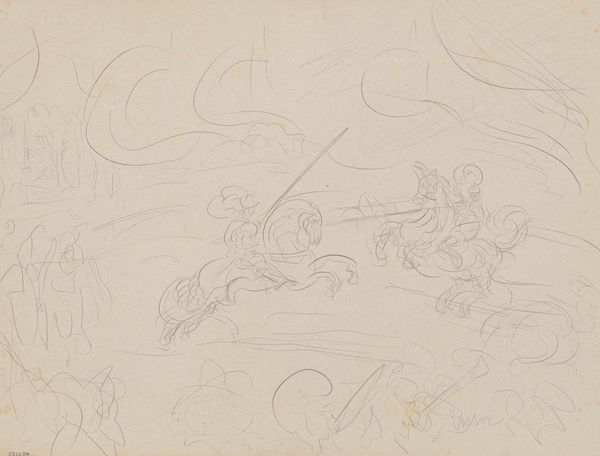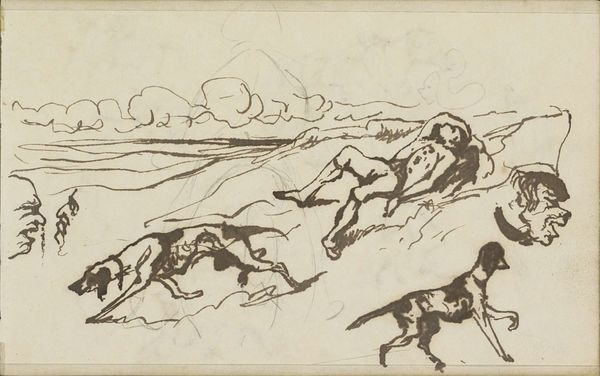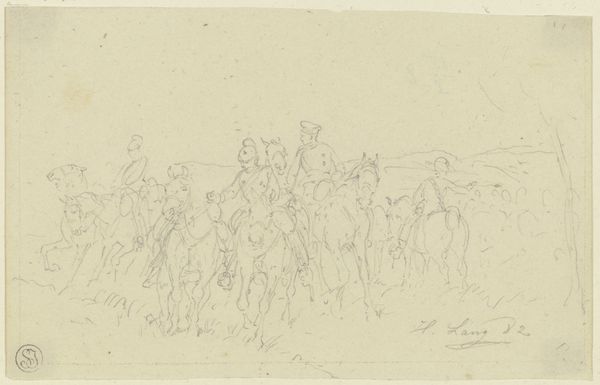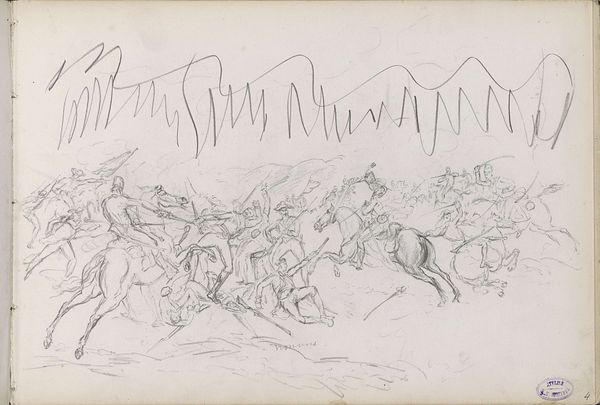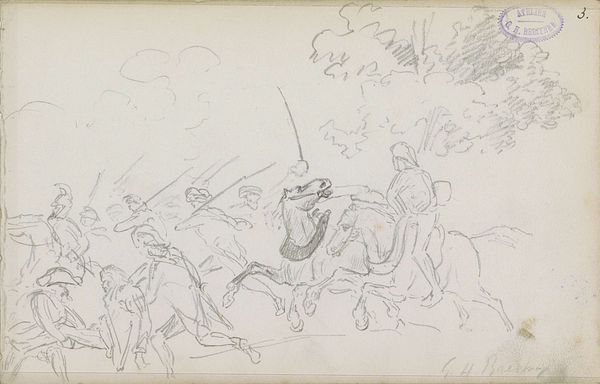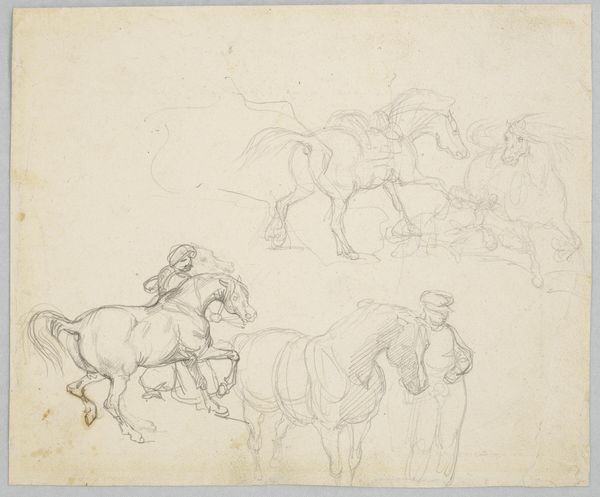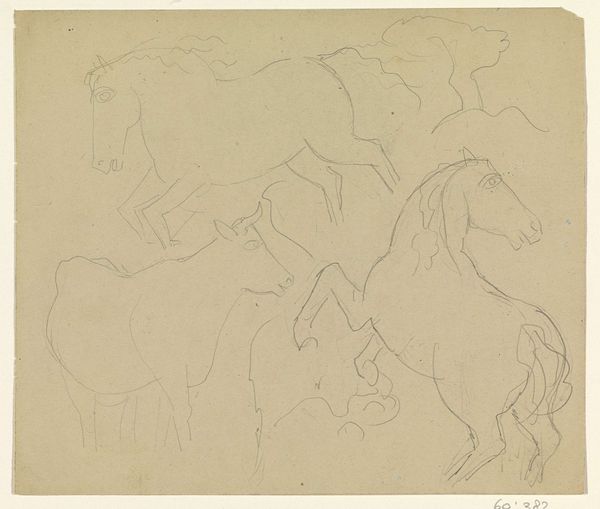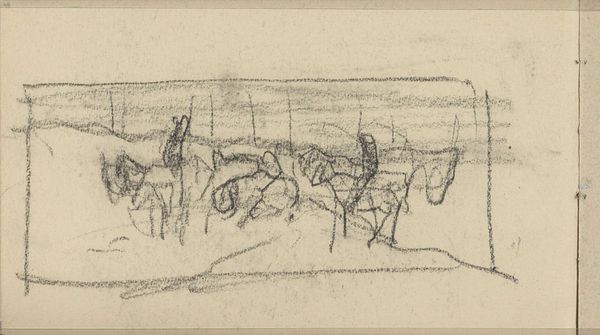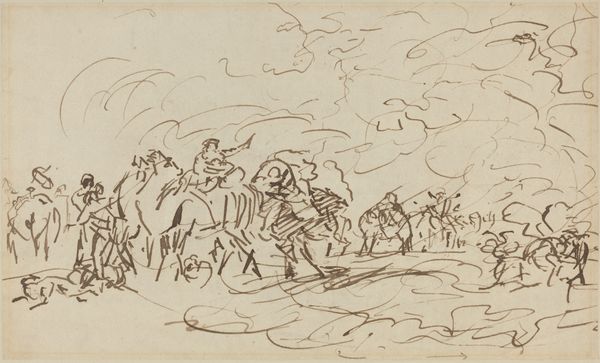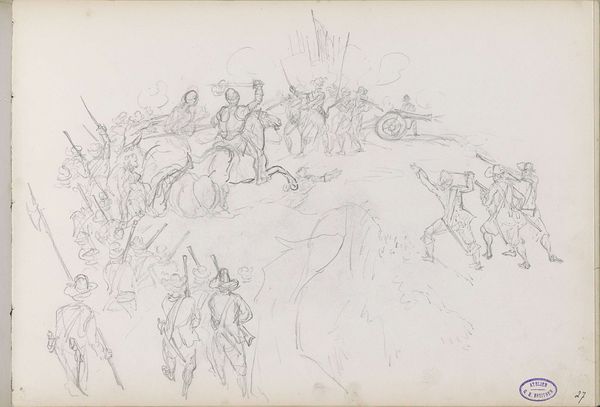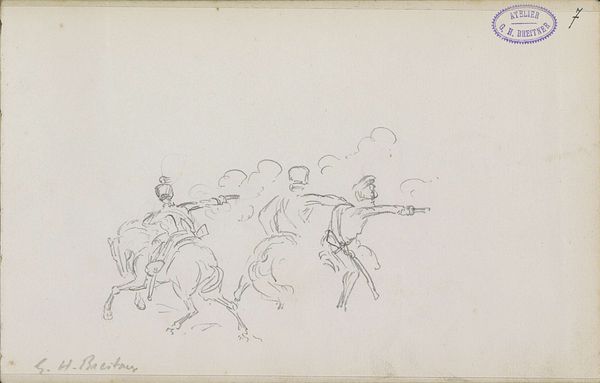
drawing, pencil
#
drawing
#
fairy-painting
#
figuration
#
pencil
#
symbolism
Copyright: Public Domain: Artvee
Editor: Here we have James Ensor’s “Walkurengenoegens,” a pencil drawing. It feels ephemeral, like a dream sketched onto paper. What strikes me most is how he renders the figures—the Valkyries and their steeds—as if they’re dissolving into the very air they ride through. What do you see in this piece? Curator: This drawing invites a look into Ensor's engagement with material limitations and artistic labour. The use of pencil on paper – such readily available, inexpensive materials – contrasts sharply with the grandiose subject matter. The ethereal quality you mention can be attributed not just to the subject, but to the very process of creation; the light touch of pencil creates a sense of transience. Do you think the unfinished nature impacts its message? Editor: Absolutely. It suggests a glimpse behind the scenes, like witnessing the raw materials of a grand myth in its initial stages. I am interested in his choice to leave it rather unfinished. Was this a common choice for Ensor or for the symbolism movement? Curator: Exactly. The “unfinishedness” disrupts conventional notions of artistic skill, drawing attention to the act of artistic production rather than the illusionistic finesse. In symbolism, material exploration allowed artists to free themselves of representation. Consider what labor the printing of drawings and lithographs represented at the turn of the century and the increasing access people had to reproduced images and paper goods like magazines and fliers. His material choices democratize what previously had been reserved for the elite, defying the class boundaries maintained through materiality in art history. Editor: That’s a fascinating perspective. I hadn't considered the democratization aspect so directly. It adds a whole new layer to the meaning for me. Curator: Indeed. By focusing on the materials and their social context, we see how Ensor uses seemingly humble means to engage with potent themes and the socio-economic fabric of art itself. Editor: This really changed how I look at drawings like these; thanks for highlighting the connection between artistic intention and material choices. Curator: It’s rewarding to remember that the ‘what’ of the work also deeply relies on the ‘how’ it was produced and what statements the ‘how’ makes.
Comments
No comments
Be the first to comment and join the conversation on the ultimate creative platform.
